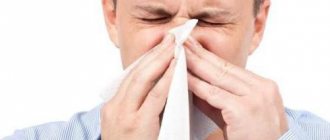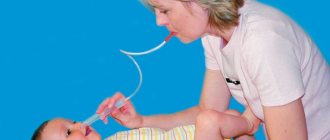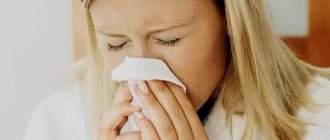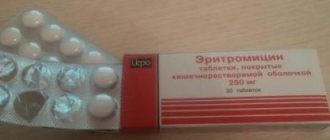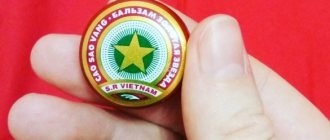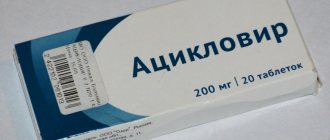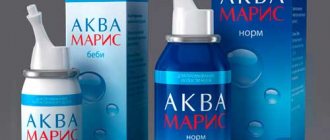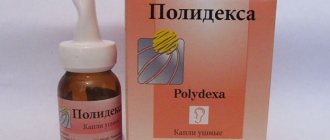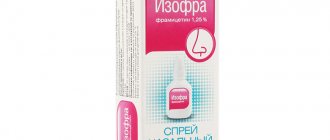Why is Oxolinic ointment used for infants? In the autumn-winter period and during an epidemic of influenza and acute respiratory diseases, it is necessary to take preventive measures to protect yourself and your child from infections. Garlic and onions, various herbal teas and decoctions are used. Parents, caring for the health of their child, purchase expensive immunomodulatory and antiviral drugs to provide their child with reliable protection against diseases. Oxolinic ointment, a reliable prophylactic for viral diseases, is disappearing from pharmacy shelves.
Description of the drug
Oxolinic ointment has a white or light yellow color, but during storage a pink tint may appear. There are several manufacturers of the drug, and they produce the ointment in tubes and jars that differ in weight. The medication is an antiviral drug. Certain concentrations of the active substance are used to treat various diseases:
- ointment for nasal use 0.25% is used to prevent influenza, treat viral rhinitis and viral eye diseases. 1 g of ointment contains 2.5 mg of oxoline;
- ointment for external use 3% helps remove warts, cure herpes and other skin diseases. 1 g of ointment contains 30 mg of oxoline.
Oxolinic ointment 0.25% is used as a nasal and ophthalmic antiviral agent on the mucous membranes, and 3% on the affected skin.
In addition to the active ingredient, the drug contains mineral oil and soft paraffin. Oxolin has a destructive effect on the DNA of the virus, entering into a chemical reaction with the guanine residues of the nucleic acids of the virus, as a result of which the nucleic acid becomes inactive.
Indications for use of nasal ointment:
- treatment of viral eye diseases: conjunctivitis, keratitis;
- treatment of viral rhinitis, adenovirus;
- treatment of stomatitis;
- prevention of influenza and ARVI.
Indications for use of external ointment:
- treatment of viral skin diseases: herpetic rashes, shingles and scaly lichen;
- removal of warts.
When the ointment is applied to the skin and mucous membranes, it is quickly absorbed and partially penetrates into the blood and organs. The active substance is excreted from the body in the urine within 24 hours and does not accumulate in the organs.
Side effects during treatment with oxoline are rare, but itching and burning may occur at the site of application of the drug. For people who are sensitive to oxoline, treatment with ointment is contraindicated. If any side effects are detected, treatment should be stopped, the remaining drug should be washed off with warm water and consult a doctor immediately. Before use, you must study the instructions and adhere to all recommendations in the package insert.
Indications for use of oxolinic ointment
Indications for the use of the drug in children are:
- runny nose of viral etiology accompanying influenza or ARVI;
- virus infection of the cornea and conjunctiva of the eye;
- prevention of influenza and acute respiratory viral infections;
- stomatitis.
The drug has an effective inhibitory effect on the activity of viruses:
- flu;
- herpes simplex and herpes zoster;
- chicken pox;
- adenovirus – the main causative agent of acute respiratory viral infections;
- human papillomas - provokes the appearance of warts;
- molluscum contagiosum.
Oxolinic ointment is indicated for children to prevent influenza in the autumn and winter seasons. The drug is ineffective in combating an already established disease.
It is noteworthy that the famous children's doctor E. O. Komarovsky, whose opinion is listened to in professional circles, believes that in modern medicine there are no effective antiviral drugs, and numerous examples of recovery with the help of medications are nothing more than the placebo effect. Despite this, many parents still use oxolinic ointment for the treatment and prevention of diseases of viral etiology in children.
Doctors' disputes about the remedy
The effectiveness of Oxolinic ointment has not been proven for preventive purposes during an influenza epidemic. However, oxolin is a very popular prophylactic agent. The medication protects the body from the entry of pathogenic bacteria through the nasal mucosa, helps the body overcome viruses, and also stops their reproduction at the initial stage. The ointment serves as a barrier to prevent infection from entering the body through the nasal passage.
Over the 40 years of use of the drug, not a single clinical trial has been conducted that would prove the effectiveness of oxoline and the advisability of its use for preventive purposes during epidemics of viral diseases. People buy the drug based on its popularity. Judging by the results of sales of the ointment in the autumn-winter period, it does not need an evidence base, especially since doctors themselves recommend “oxolinka” as an effective preventive drug.
To this day, pediatricians continue to debate about the use of the drug in newborns and infants, since the instructions prohibit the use of the drug in very young children. And mothers begin to panic: why did the doctor prescribe Oxolinic ointment for a child under 2 years old? Why use a product for a baby that has powerful protection from mother's breast milk? Regular Vaseline can also be used as a preventative against viruses.
As for the ointment as a medicine for the prevention of viral diseases, pediatricians are confident in its effectiveness. And many mothers trust oxolin to protect the child’s body from pathogenic bacteria. Parents are not confused by the argument that the drug can be used by children over 2 years of age. If you dilute the ointment with Vaseline, it will have virtually no side effects, but will be able to provide the child with the necessary protection during an epidemic of viral diseases.
As doctors explain, the age limit is indicated in the instructions due to the fact that Oxolinic ointment for newborns, during use, dries out the nasal mucosa, which in young children is already very delicate and needs to be moisturized. Therefore, pediatricians suggest mixing the drug with baby cream or Vaseline. It is necessary to smear not the nasal passage itself, but the edges of the nasal wings.
Is it possible for infants to use oxolinic ointment?
We are often asked, is oxolinic ointment suitable for infants? It is difficult to answer this question unequivocally. Firstly, no serious research has ever been conducted on the safety of oxolinic ointment for infants, so it is difficult to talk about its absolute safety.
One of its unpleasant manifestations is that it dries out the mucous membrane. This will cause some inconvenience to the child. But if you apply a little cream or Vaseline along with oxolinic ointment, dryness can be avoided.
But judging by the reviews, many mothers give this drug to newborn babies and they do not complain. Thus, we will answer the question “is oxolinic ointment suitable for babies” - yes, it is possible, but try to use creams that soften the nasal mucosa along with it.
Instructions for use
When a mother gets sick, it’s not so bad, but when a child gets sick, it’s a family disaster. Therefore, in order to avoid infection of the baby from a sick family member, it is necessary to take preventive measures: ventilate the room, wear a respiratory mask to the sick mother or father, take immunomodulatory drugs. Oxolinic ointment will be an excellent assistant in the fight against viruses, which prevents dangerous bacteria from entering a small body by creating a protective barrier.
The instructions state that the use of the drug is permitted for children over 2 years of age. But, as we have already found out, pediatricians are skeptical about this issue, so they recommend adhering to some recommendations so that Oxolinic ointment for infants does not cause adverse reactions and does not harm the growing body.
To protect your baby from contracting the virus from a sick family member, doctors advise smearing the little nose 2 times a day. Before going outside or visiting a crowded place during a flu epidemic, it is imperative to use ointment for infants. The procedure should be carried out after returning home. The duration of use of the drug for preventive purposes should not exceed 25-30 days.
Oxolin can be used to treat adenoviral rhinitis, while the nasal passage is lubricated with ointment 2-3 times a day for 3-4 days. In this case, the drug is used as a complex treatment after instillation of the nasal passages with vasoconstrictor drops, so as not to wash off the active substance, thereby reducing the effectiveness of the ointment.
For viral conjunctivitis, Oxolinic ointment, which is applied behind the eyelid 2-3 times a day for 5-7 days, will perfectly cope with the disease. But remember that there are many viruses that provoke inflammation of the cornea, so only a doctor should prescribe treatment after examining the patient. Do not self-medicate, otherwise uncontrolled use of the drug can harm your health.
Treatment of babies
Children react to medications much more sensitively than adults.
Therefore, if your doctor has prescribed Oxolinic ointment for your baby for preventive purposes, but you have doubts about the medicine, you should weigh all the advantages and disadvantages of the medicine before use.
Every mother has her own views on this matter. But since the drug does not have a toxic effect or cumulative properties in the body during use, it is widely used in pediatric practice for the prevention of viral infections in infants.
When purchasing “Oxolinka,” a mother must check the dosage of the drug to avoid negative consequences: a highly concentrated ointment can irritate the delicate mucous membrane of a child’s nose. Be sure to check the concentration of the active substance when purchasing and before using it on an infant.
At what age can oxolin be used? Despite the fact that the instructions prohibit the use of the ointment for children under 2 years of age due to the lack of clinical trials, pediatricians have approved the use of the ointment and its analogues in young children. In order not to dry out the mucous membrane of the nasal passages, doctors recommend mixing Oxolinic ointment with Vaseline or baby cream. It is unacceptable to store the resulting product, so it is necessary to prepare a healing ointment for one use.
Some doctors still do not recommend using the drug for children under one year of age, since the nasal passages in children are narrow and located near the lacrimal sac and middle ear. Oxolinic ointment can easily spread the virus from the nasal cavity to the middle ear, which threatens an inflammatory process.
In addition, “oxolinka” can cause spasm of the bronchi and trachea. If you inhale forcefully, even a small ball of ointment if it enters the respiratory tract can lead to blockage and respiratory arrest. If you notice a whistling sound when breathing, call an ambulance immediately. After 2 years of age, children's airways and nasal passages become wider, and a spasm will not be able to block them, impairing the child's breathing.
In most cases, the drug is well tolerated in both infants and older patients. Allergic reactions were observed in 1% of people.
Still, it is easier and better to prevent any disease than to poison the body with medications that can cause allergies or affect the functioning of other organs. This is especially true for newborn children who are just beginning to develop and establish the functioning of all body systems.
Oxolinic ointment is considered one of the popular methods of protecting children of all ages from airborne infections. It is often used for children aged 3 years and older, when they attend kindergartens and schools, but, due to lack of knowledge of the characteristics of the drug, it is rarely used for children under one year old, and especially for newborns.
In this article we will consider: the features of using oxolinic ointment and whether it can be used by infants.
How does oxolinic ointment work and its composition?
Oxolinic ointment received its antiviral properties due to the fact that its main active substance is oxolinum, which interacts with the acids that make up the virus and blocks their action. Doctors also note a good anti-inflammatory effect when applied topically.
Intended only for external use, since oxolinic ointment applied in a thin layer to the arches of the nostrils effectively prevents pathogenic microorganisms from penetrating into the body through the nasal mucosa and preventing them from spreading.
Oxolinic ointment - application
In medicine it is used to treat the following diseases:
- stomatitis;
- herpes zoster and lichen;
- adenoviruses;
- Dühring's dermatitis;
- infectious warts;
- viral rhinitis;
- flu;
- damage to the organs of vision by viruses.
For preventive purposes they are used against:
- cold viral diseases (ARVI, influenza);
- runny nose.
Available in tubes with different oxoline contents:
- 0.25% - intended for the prevention and treatment of viral rhinitis, influenza, acute respiratory viral infections, and this ointment can be applied to children up to one year old, for a better effect, mixing it with baby cream.
- 3% - this oxolinic ointment is used in the treatment of stomatitis, herpes and other skin and eye viral diseases.
Oxolinic ointment - contraindications
To prevent the use of this ointment from leading to unwanted complications, you should be aware of the existing contraindications for its use:
- Expired shelf life - storage of oxolinic ointment is allowed for 2 years after the start of use, always in a cool place, away from direct sunlight.
- Age up to 2 years - since no studies have been conducted on whether oxolinic ointment can be used in newborns and children under one year old. There is also information that oxolin dries out the mucous membrane and can cause a slight burning sensation, which causes discomfort to the child. The third reason is the high viscosity of the ointment, which makes it difficult for the baby to breathe.
- Intolerance to one or more components of the ointment - in this case, you should absolutely not use the drug, as it can cause swelling of the mucous membrane.
At what age you decide to use oxolinic ointment as protection against seasonal viral diseases depends only on your decision and the child’s health condition, since some pediatricians strongly recommend it for the prevention of viral diseases, while others, on the contrary, say that this ointment is completely useless.
If you do not want to use oxolinic ointment for children under one year old, then you can lubricate the nostrils of their noses with Vaseline or any other preparation that has the same viscous consistency.
Arguments against the drug
Despite all the advantages of the drug, side effects still occur. Homeopaths advise rinsing the child's nasal passage with sea water. This will be enough to support local immunity and prevent the virus from entering the small body. If a child is predisposed to diseases, then no ointments or tablets will save the body from the penetration of the virus.
If we talk about the disadvantages of Oxolinic ointment, we can note the following aspects:
- After application to the mucous membrane, the product causes a burning sensation, and the baby will react to discomfort by crying.
- The ointment sticks together the villi in the nasal passage, making breathing difficult.
- There is a possibility of an allergic reaction.
- Unproven effectiveness.
It is worth considering the fact that infection occurs not only through the nasal passage, but also through the mouth, so it is impossible to talk about 100% protection of the body from viruses.
Contraindications
Although this drug is relatively safe, since it is not absorbed into the blood, it is not always advisable to use it for young children:
- It is not recommended to use oxolinic ointment for children under 1 year of age, since the effect of this drug on infants has not yet been fully studied. In addition, this ointment tends to dry out the mucous membrane and cause a burning sensation. And since the consistency of this ointment is quite viscous, it can make it difficult for the child to breathe.
- This ointment should only be stored in a dark and cool place, for no more than two years after opening the tube. If the ointment has expired or was stored incorrectly, it is not recommended to use it.
- Sometimes a child may experience allergic reactions to the components contained in oxolinic ointment. If such intolerance to the drug has been noticed, its further use is strictly contraindicated, since it can cause swelling of the nasal mucosa.
That is why parents have to use oxolinic ointment for infants at their own peril and risk.
